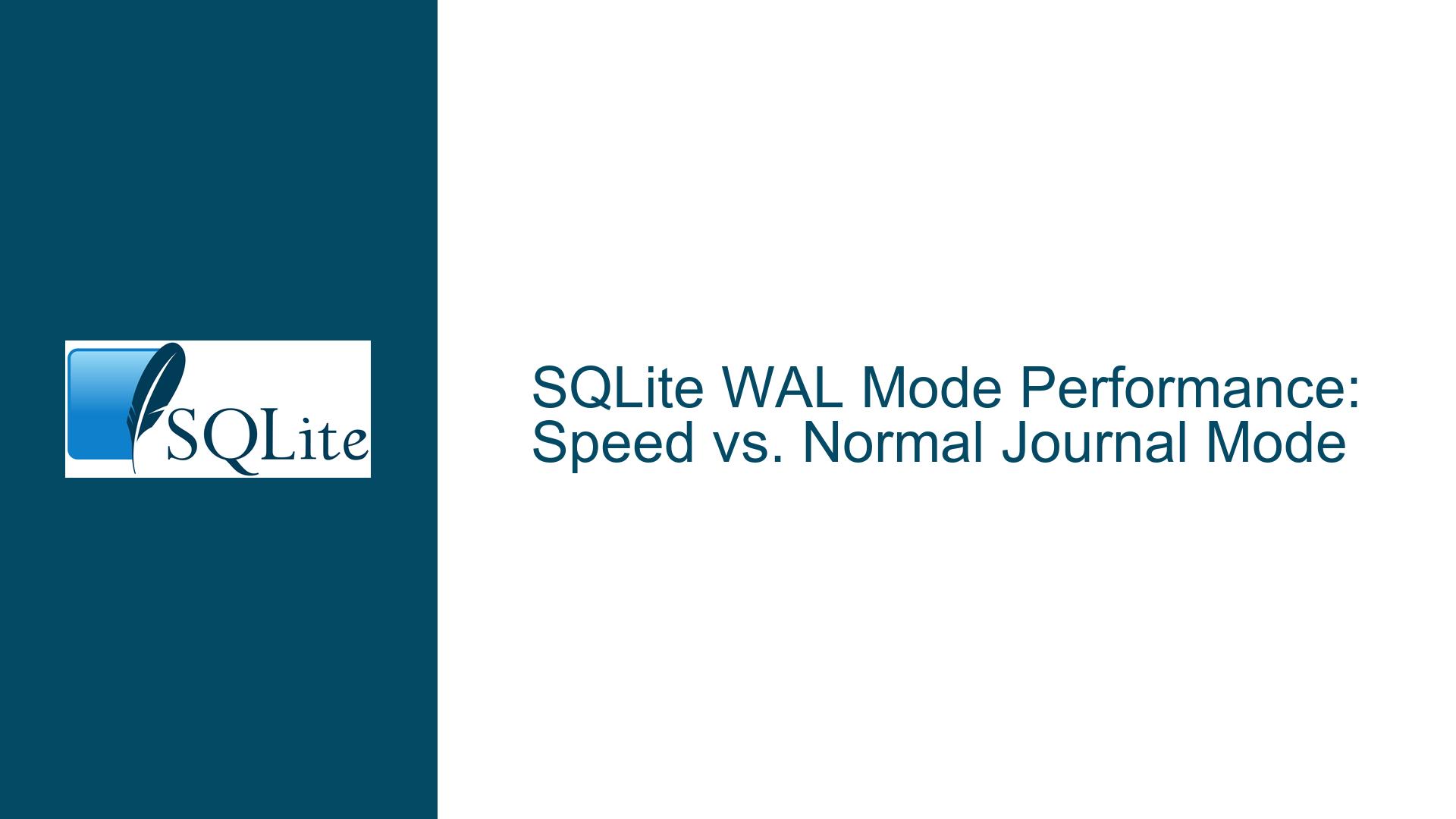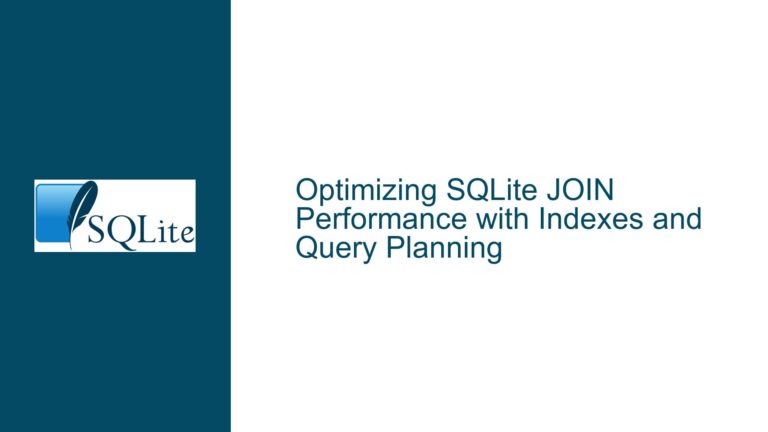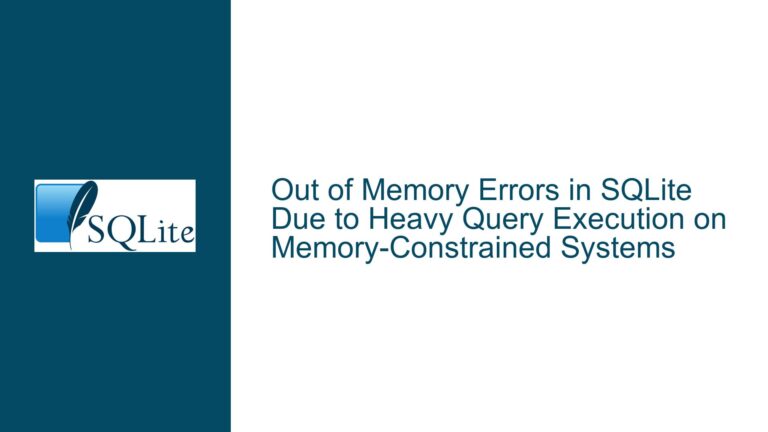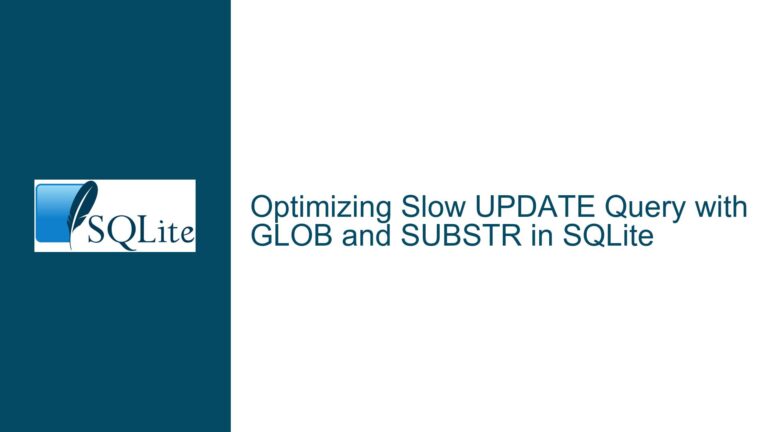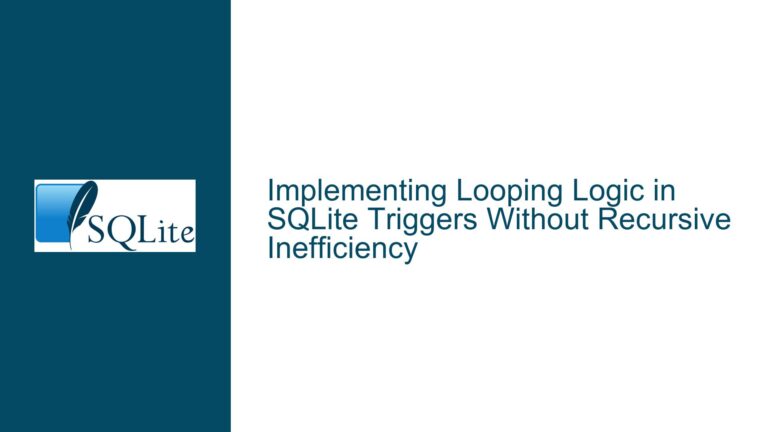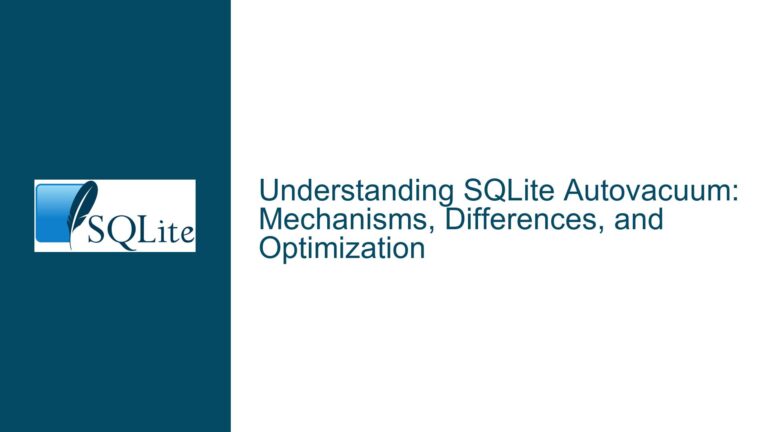SQLite WAL Mode Performance: Speed vs. Normal Journal Mode
WAL Mode Performance Claims and Real-World Scenarios
The Write-Ahead Logging (WAL) mode in SQLite is often touted as being "significantly faster in most scenarios" compared to the traditional rollback journal mode. However, this claim is not universally applicable and depends heavily on the specific workload, concurrency, and system environment. The primary advantage of WAL mode lies in its ability to handle concurrent read and write operations more efficiently, reducing contention and improving throughput in multi-connection scenarios. However, for single-connection workloads, the performance benefits are less clear-cut and can even be detrimental in certain cases.
WAL mode achieves its concurrency advantages by decoupling write operations from read operations. Instead of directly modifying the database file, writes are appended to a separate WAL file. Reads can continue to access the database file without being blocked by writes, as the WAL file contains the most recent changes. This design reduces the need for exclusive locks, which are required in rollback journal mode when a write operation is in progress. However, this decoupling introduces additional overhead, such as the need to check the WAL file for changes during reads and the periodic checkpointing process, which merges the WAL file changes back into the main database file.
The performance impact of WAL mode varies depending on the workload. For example, in a heavy-insert scenario, WAL mode may not provide significant speed improvements and could even be slower due to the overhead of maintaining the WAL file and performing checkpoints. On the other hand, in scenarios with many concurrent reads and occasional writes, WAL mode can significantly reduce contention and improve overall throughput. The performance characteristics also depend on factors such as the operating system, file system, storage medium, and SQLite version, making it difficult to generalize the results across different environments.
Factors Influencing WAL Mode Performance
Several factors influence the performance of WAL mode compared to rollback journal mode. These include the type of workload, the level of concurrency, the storage medium, the operating system, and the file system. Each of these factors can have a significant impact on the performance characteristics of WAL mode, and understanding their effects is crucial for making informed decisions about when to use WAL mode.
The type of workload is one of the most important factors. Workloads that involve a high volume of write operations, such as bulk inserts or updates, may not benefit as much from WAL mode. In these cases, the overhead of maintaining the WAL file and performing checkpoints can outweigh the benefits of reduced contention. On the other hand, workloads with a high volume of read operations and occasional writes are more likely to benefit from WAL mode, as the reduced contention can lead to significant performance improvements.
The level of concurrency is another critical factor. WAL mode is designed to handle multiple concurrent connections more efficiently than rollback journal mode. In scenarios with many concurrent readers and writers, WAL mode can significantly reduce contention and improve throughput. However, in single-connection scenarios, the benefits of WAL mode are less pronounced, and the additional overhead may even lead to slower performance.
The storage medium also plays a significant role in determining the performance of WAL mode. Solid-state drives (SSDs) generally perform better with WAL mode than traditional hard disk drives (HDDs) due to their faster random write speeds. However, the performance difference between WAL mode and rollback journal mode can vary depending on the specific characteristics of the storage medium, such as its latency, throughput, and ability to handle concurrent I/O operations.
The operating system and file system can also influence the performance of WAL mode. Different operating systems and file systems have varying levels of support for features such as scatter-gather I/O, which can affect the performance of WAL mode. For example, some file systems may handle sequential writes more efficiently than others, which can impact the performance of the WAL file. Additionally, the presence of antivirus software or other background processes can introduce additional overhead that affects the performance of WAL mode.
Finally, the SQLite version can also impact the performance of WAL mode. Newer versions of SQLite may include optimizations or bug fixes that improve the performance of WAL mode, while older versions may have limitations or issues that affect performance. It is important to consider the specific version of SQLite being used when evaluating the performance of WAL mode.
Benchmarking and Optimizing WAL Mode Performance
To determine whether WAL mode is suitable for a specific use case, it is essential to conduct benchmarks that reflect the actual workload and environment. This involves setting up a test environment that closely mirrors the production environment, including the same hardware, operating system, file system, and SQLite version. The benchmark should include a variety of workloads, such as single-connection and multi-connection scenarios, as well as different types of operations, such as inserts, updates, and queries.
When conducting benchmarks, it is important to measure both the throughput and latency of the operations. Throughput measures the number of operations that can be performed in a given time period, while latency measures the time it takes to complete a single operation. Both metrics are important for understanding the performance characteristics of WAL mode and identifying potential bottlenecks.
In addition to benchmarking, there are several strategies for optimizing the performance of WAL mode. One approach is to adjust the size of the WAL file and the frequency of checkpoints. The WAL file size can be controlled using the PRAGMA journal_size_limit command, while the checkpoint frequency can be controlled using the PRAGMA wal_autocheckpoint command. Increasing the WAL file size and reducing the checkpoint frequency can improve performance in scenarios with a high volume of write operations, but it may also increase the risk of data loss in the event of a crash.
Another optimization strategy is to use the PRAGMA synchronous command to control the level of synchronization between the WAL file and the database file. Setting PRAGMA synchronous to NORMAL or OFF can improve performance by reducing the number of fsync operations, but it also increases the risk of data corruption in the event of a crash. It is important to carefully consider the trade-offs between performance and data integrity when using this option.
Finally, it is important to monitor the performance of WAL mode in production and make adjustments as needed. This may involve using tools such as the SQLite command-line interface or third-party monitoring tools to track metrics such as the size of the WAL file, the frequency of checkpoints, and the performance of individual queries. By continuously monitoring and optimizing the performance of WAL mode, it is possible to achieve the best possible performance for a given workload and environment.
In conclusion, the performance of WAL mode in SQLite depends on a variety of factors, including the type of workload, the level of concurrency, the storage medium, the operating system, and the file system. While WAL mode can provide significant performance benefits in scenarios with many concurrent readers and writers, it may not be suitable for all use cases. By conducting benchmarks, optimizing the configuration, and monitoring performance in production, it is possible to determine whether WAL mode is the right choice for a specific application and achieve the best possible performance.
